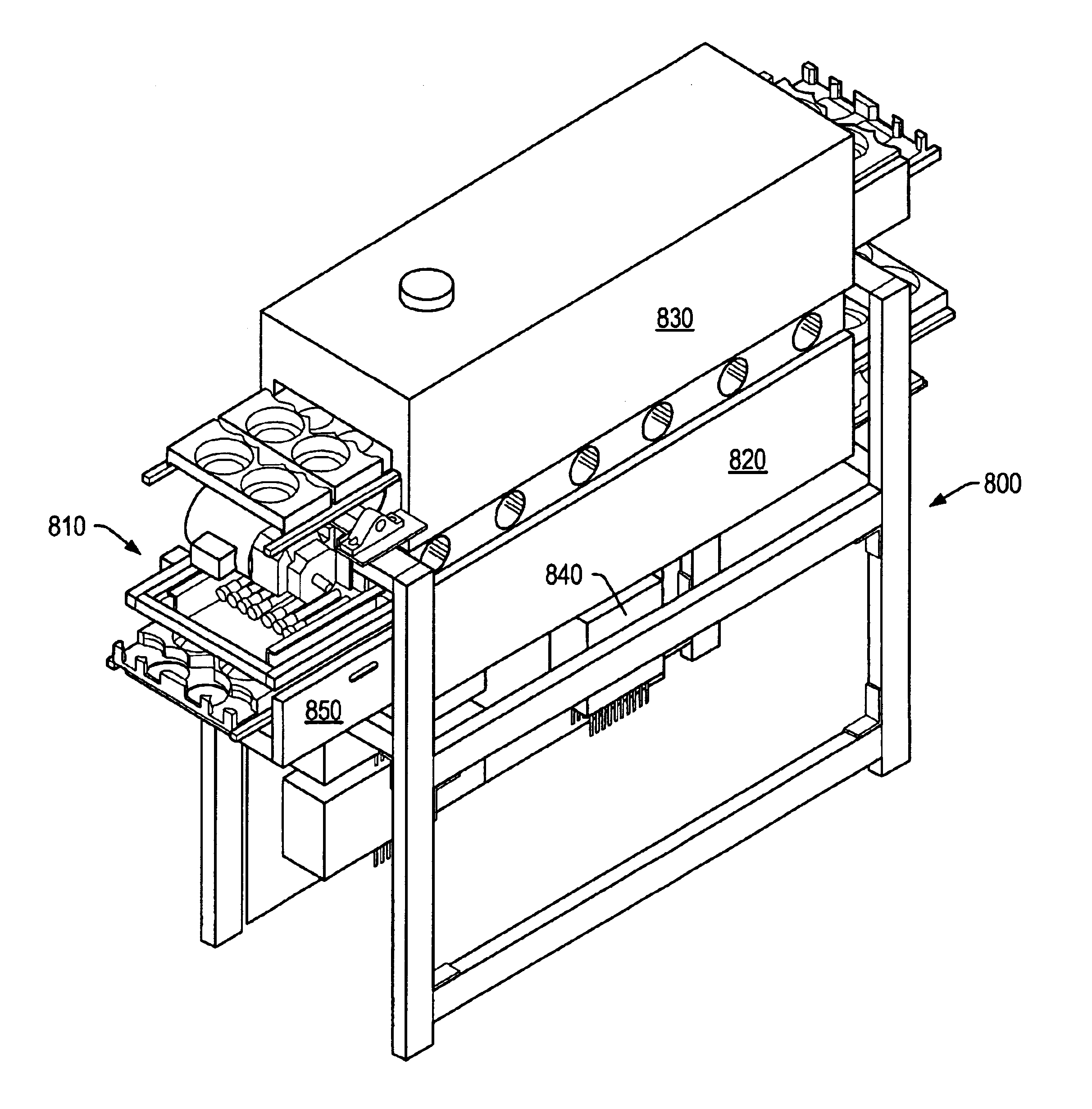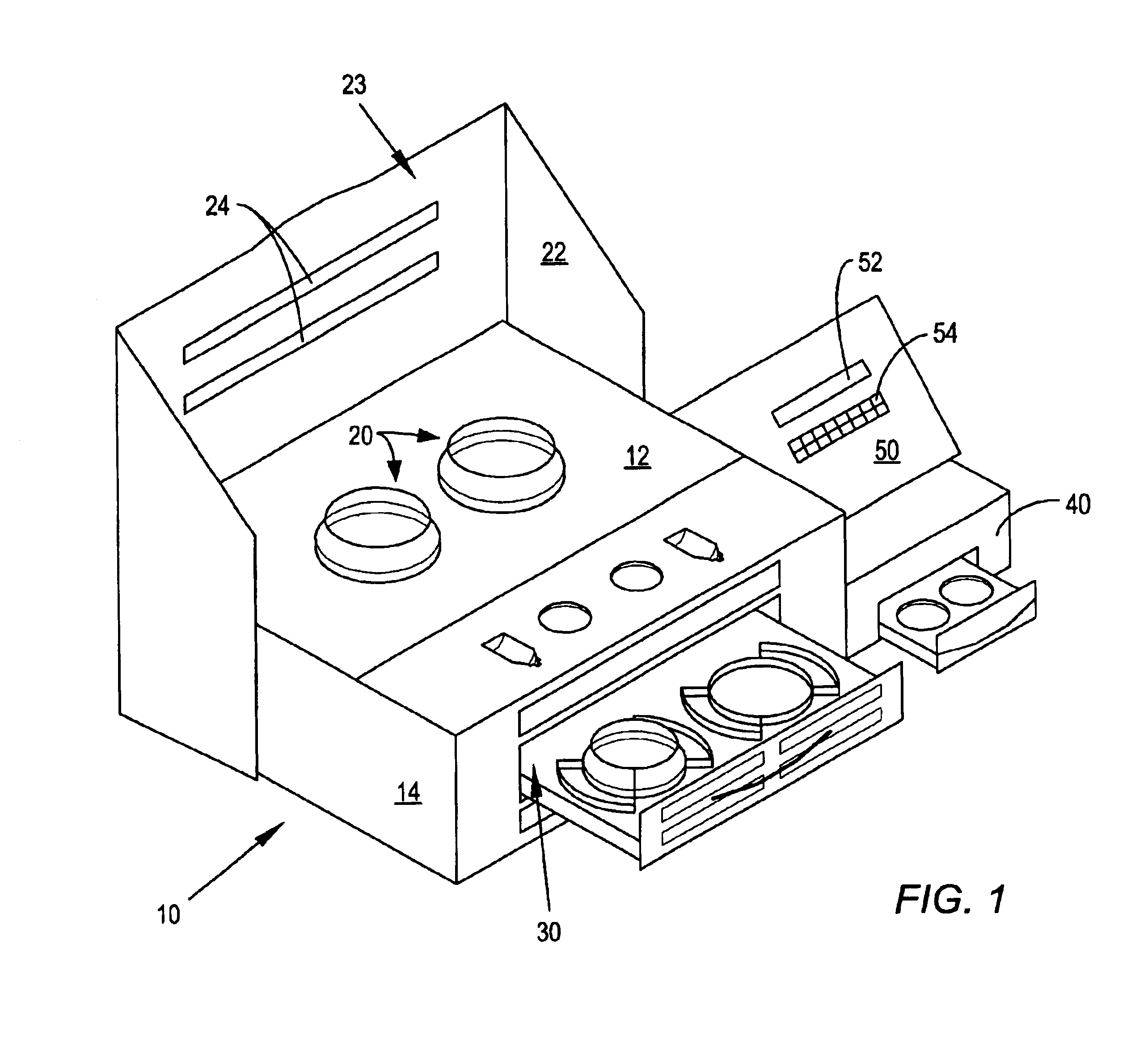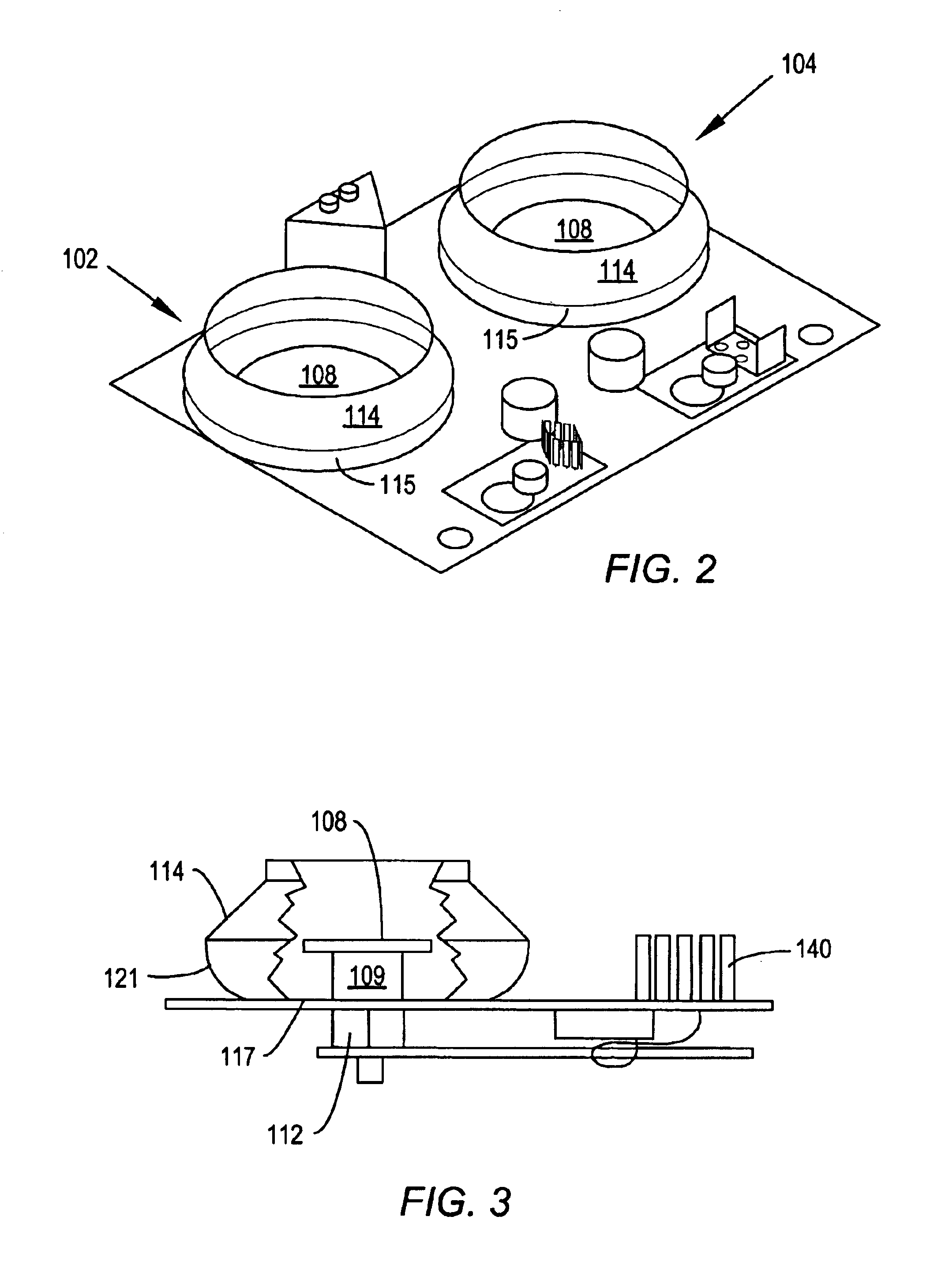Apparatus for preparing multiple eyeglass lenses
a technology for eyeglass lenses and apparatuses, applied in the field of eyeglass lenses, can solve problems such as lens yellowing, lens or mold cracking, and lens distortion in the lens
- Summary
- Abstract
- Description
- Claims
- Application Information
AI Technical Summary
Benefits of technology
Problems solved by technology
Method used
Image
Examples
examples
A plastic eyeglass lens was made according to the process described above from the OMB-99 monomer solution. The lens was then coated with two antireflective coating compositions. In all of the examples, the following abbreviations are used:“AC” is acetone, commercially available from Aldrich;“AA” is an acrylic amine commercially available as CN384 from Sartomer;“Al” is aluminum tri-sec-butoxide (98%) commercially available from Avocado;“AS” is 3-aminopropyltrimethoxysilane (97%) commercially available from Aldrich;“BDK”, “BDM”, and “BDMK” are Photomer 51 and 2,2-dimethoxy-2-phenylacetophenone commercially available from Henkel;“BYK300” is a solution of polyether modified dimethylpolysiloxane copolymer commercially available from BYK Chemie;“CD1012” is diaryl iodonium hexafluoroantimonate commercially available from Sartomer;“CD540” is ethoxylated bisphenol A dimethacrylate commercially available from Sartomer;“CN124” is epoxy acrylate commercially available from Sartomer;“Cynox 1790...
PUM
| Property | Measurement | Unit |
|---|---|---|
| temperature | aaaaa | aaaaa |
| wavelengths | aaaaa | aaaaa |
| wavelengths | aaaaa | aaaaa |
Abstract
Description
Claims
Application Information
 Login to View More
Login to View More - R&D
- Intellectual Property
- Life Sciences
- Materials
- Tech Scout
- Unparalleled Data Quality
- Higher Quality Content
- 60% Fewer Hallucinations
Browse by: Latest US Patents, China's latest patents, Technical Efficacy Thesaurus, Application Domain, Technology Topic, Popular Technical Reports.
© 2025 PatSnap. All rights reserved.Legal|Privacy policy|Modern Slavery Act Transparency Statement|Sitemap|About US| Contact US: help@patsnap.com



